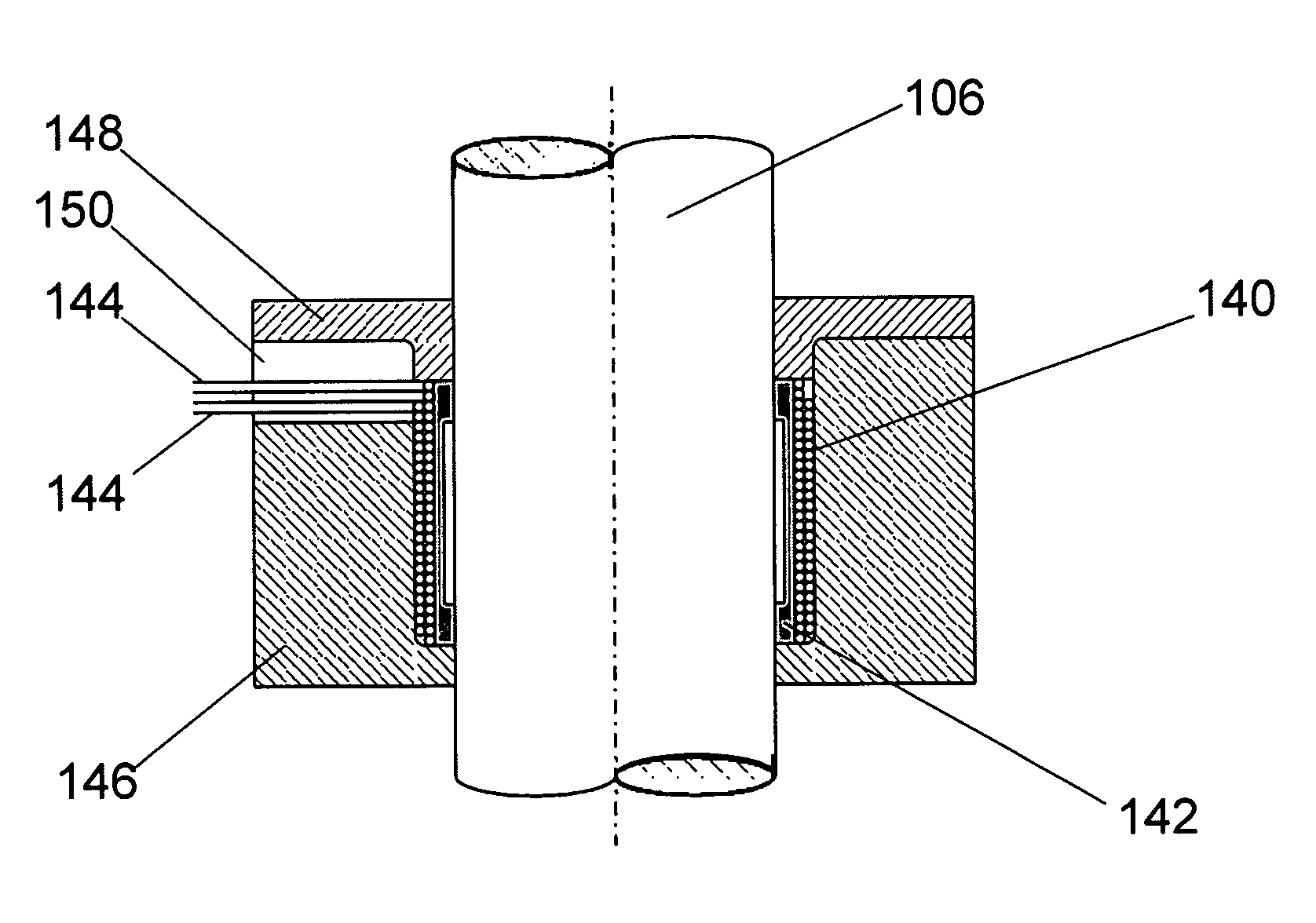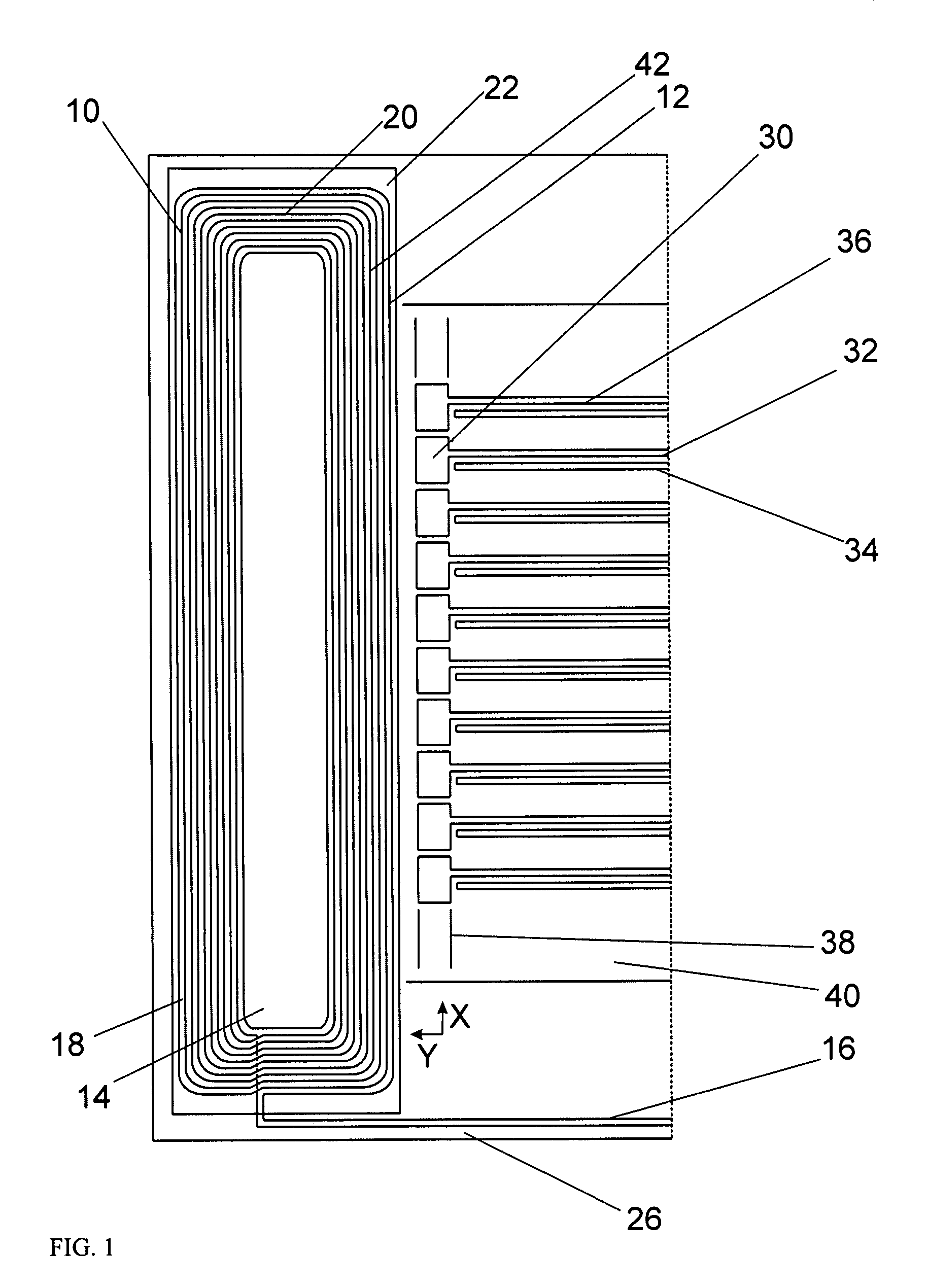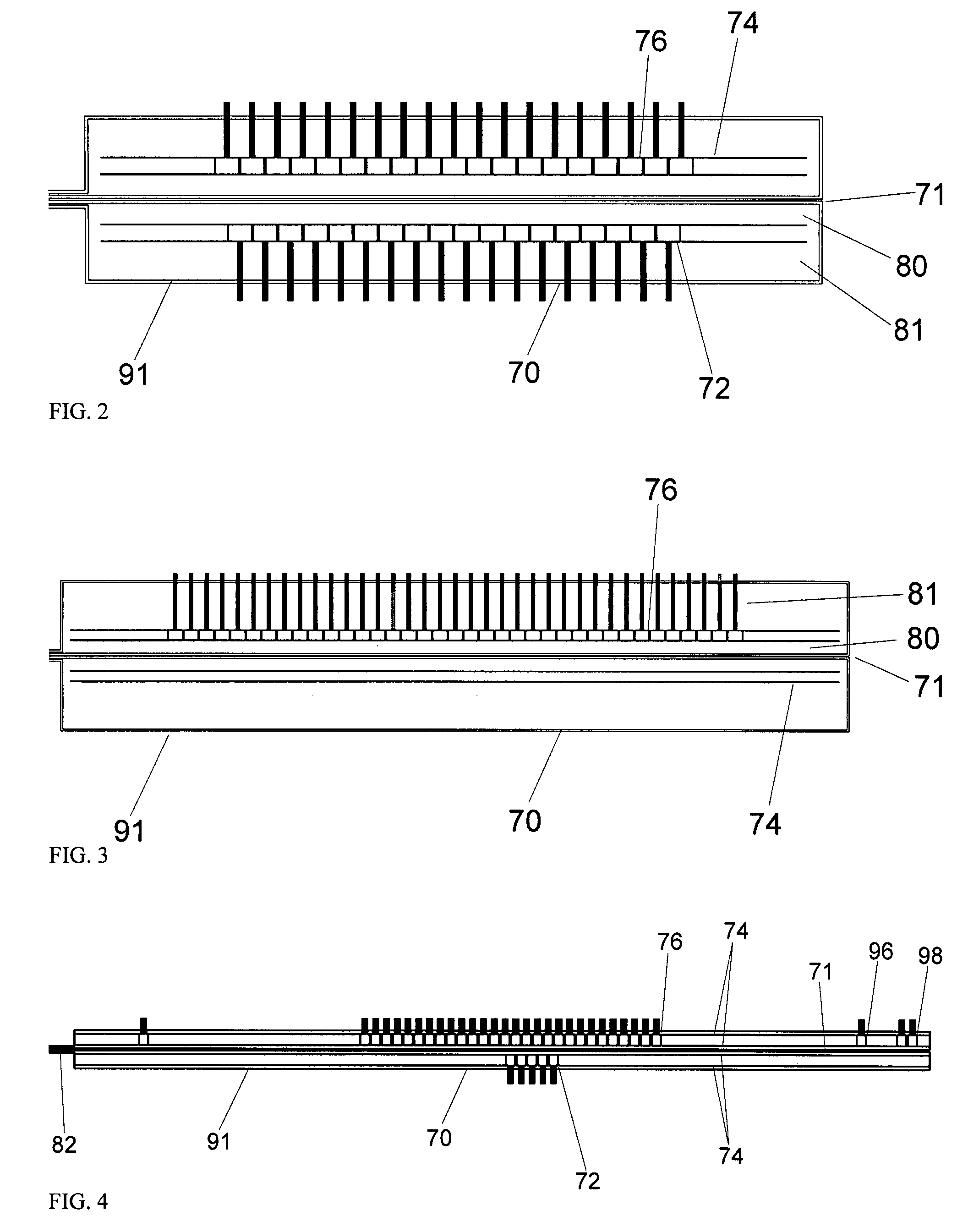Hybrid wound/etched winding constructs for scanning and monitoring
a technology of etching and winding, applied in the direction of magnetic measurement, instruments, measurement devices, etc., can solve the problems of excessively long scanning time and care, and achieve the effect of enhancing the observability of property changes and promoting accurate modeling of responses
- Summary
- Abstract
- Description
- Claims
- Application Information
AI Technical Summary
Benefits of technology
Problems solved by technology
Method used
Image
Examples
Embodiment Construction
[0040]A description of preferred embodiments of the invention follows.
[0041]The use of hybrid eddy-current sensors and sensor arrays is described herein for the nondestructive characterization of materials, particularly as it applies to the characterization of conducting and / or magnetic materials. This includes surface mounted and scanning, contact and non-contact configurations. This sensing approach can be used to monitor the material characteristics at a given location with single or multiple sensing element sensors, sensor arrays and / or networks of surface mounted sensors using hand-held probes, mounted into automated scanners or as part of an embedded network.
[0042]This invention describes the use of a combination of etched and wound winding constructs to construct an eddy current sensor or other inductive sensor, or a sensor with magnetic field measurement sensing element such as giant magnetoresistive (GMR) sensors, or with magnetic field (B field) and / or rate-of-field-change...
PUM
| Property | Measurement | Unit |
|---|---|---|
| corrosion loss | aaaaa | aaaaa |
| corrosion loss | aaaaa | aaaaa |
| corrosion loss | aaaaa | aaaaa |
Abstract
Description
Claims
Application Information
 Login to View More
Login to View More - R&D
- Intellectual Property
- Life Sciences
- Materials
- Tech Scout
- Unparalleled Data Quality
- Higher Quality Content
- 60% Fewer Hallucinations
Browse by: Latest US Patents, China's latest patents, Technical Efficacy Thesaurus, Application Domain, Technology Topic, Popular Technical Reports.
© 2025 PatSnap. All rights reserved.Legal|Privacy policy|Modern Slavery Act Transparency Statement|Sitemap|About US| Contact US: help@patsnap.com



